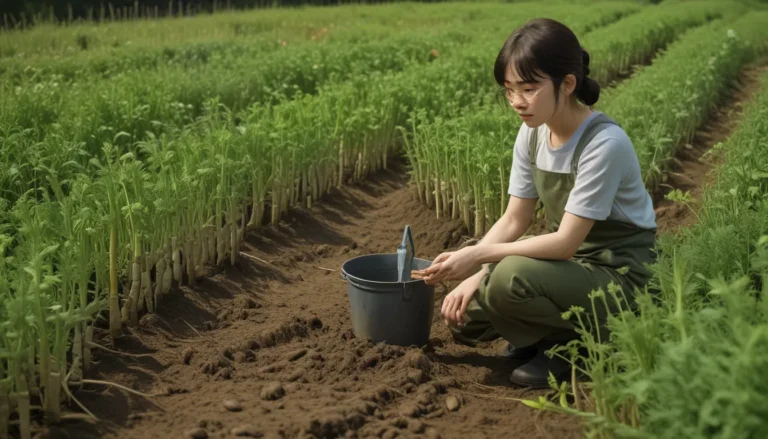Comprehensive Guide to Growing and Enjoying Highbush Blueberries

Discover the Delight of Vaccinium corymbosum
Move over apples, blueberries are the new superfood that might just keep the doctor away! According to research from Harvard Medical School, consuming blueberries regularly offers a multitude of health benefits.
But beyond the nutritional perks, blueberries are simply irresistible. The burst of flavor from a fresh blueberry in your mouth truly embodies the essence of summer. If you’re a blueberry enthusiast like me, you might already have enjoyed the experience of picking your own berries.
Highbush blueberries, most notably Vaccinium corymbosum, are the star of the show. These deciduous shrubs can grow up to eight feet tall and produce juicy, sweet berries that are commonly found in grocery stores.
Northern highbush plants, the most prevalent commercially grown variety, are self-fruitful and thrive across a wide range of climates. This makes them an ideal choice for home gardeners looking to cultivate their own blueberries.
In this extensive guide, we will explore everything you need to know about growing, caring for, and harvesting highbush blueberries to enjoy this delicious fruit right from your garden.
What You’ll Discover in this Article:
- Understanding Highbush Blueberries
- Tips for Cultivation and Their Rich History
- Various Propagation Techniques
- Guidelines for Growing High-Quality Blueberries
- Essential Growing Tips
- Recommended Cultivars to Choose From
- Strategies for Managing Pests and Disease
- Best Practices for Harvesting
- Creative Recipes and Cooking Ideas
- Quick Reference Growing Guide
Unveiling the World of Highbush Blueberries:
What Are Highbush Blueberries?
– Vaccinium corymbosum are the renowned species of blueberries, known for their juicy and sweet fruits.
– These deciduous shrubs can reach up to eight feet tall and yield bountiful harvests of delectable berries.
– Divided into northern and southern types, highbush blueberries are cultivated widely across varied regions.
– Hybrids like half-high blueberries combine the best traits of highbush and lowbush varieties.
Cultivation and Rich History:
– Indigenous populations in Eastern North America enjoyed blueberries long before cultivation began.
– Propagation of highbush varieties began in 1911 with Elizabeth Coleman White and botanist Frederick V. Colville.
– Today, highbush blueberries are the predominant species for commercial growers in the US.
Various Propagation Techniques:
– You can propagate highbush blueberries using cuttings, bare roots, or transplants.
– Cuttings can be rooted from mature plants or local wild specimens with delicious flavors.
– Bare root plants are cost-effective and ready for harvest in a short time frame.
– Transplanting is a quick method to get established plants for immediate harvest.
– Always verify permissions and regulations before harvesting plant cuttings.
Guidelines for Growing High-Quality Blueberries:
– Blueberries prefer acidic soil with a pH between 4.5 and 5.5.
– Adjust soil pH using sulfur or aluminum sulfate if needed.
– Ensure well-draining soil and regular watering for optimal growth.
– Northern highbush varieties are mostly self-fertile, while southern types require a pollination companion.
– Proper spacing, sunlight, and water management are essential for healthy growth.
Essential Growing Tips:
– Plant in full sun on a slight slope to promote drainage.
– Maintain soil pH between 4.5 and 5.5 for best results.
– Provide consistent watering of one to two inches per week.
– Practice regular pruning to maintain plant health and productivity.
Recommended Cultivars to Choose From:
– Explore popular highbush blueberry varieties suited to different climates and chill hours.
– Consider factors like yield, flavor, and growing conditions before selecting a cultivar.
– Plant companions that flower simultaneously to aid in pollination and fruit set.
– Available cultivars range from tall, prolific producers to compact, dwarf options.
Are pests and diseases threatening your blueberry harvest?
Managing Pests and Disease:
– Blueberries are susceptible to pests like birds, deer, borers, and caterpillars.
– Implement strategies such as netting, repellents, or physical barriers to protect your harvest.
– Common diseases like mosaic virus, shock virus, and ripe rot can affect plant health.
– Select disease-resistant cultivars and practice good garden hygiene to prevent pest and disease outbreaks.
Prolific Harvest and Delectable Recipes:
– Highbush blueberries are early to ripen and can produce abundant fruit for up to 50 years.
– Learn when and how to harvest blueberries for the best flavor and storage.
– Explore creative recipes like blueberry sauce, scones, and kefir for culinary delights.
Quick Reference Growing Guide:
– Quick tips on growing and growing highbush blueberries for optimal results.
– Essential information on soil, exposure, planting depth, spacing, and companion planting practices.
In conclusion, highbush blueberries are not only a delight to grow but also a rewarding addition to your home garden. With proper care, you can enjoy homegrown blueberries that surpass store-bought varieties in flavor and freshness. Take the plunge into the world of highbush blueberries and let nature’s bounty flourish in your backyard!
I look forward to hearing about your blueberry growing adventures in the comments below. Remember, delicious blueberries are just a planting away, and your garden awaits a fruitful transformation!





